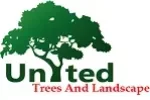Long Island Tree care
Taking Care of Your Trees on Long Island
Trees add beauty to the landscape and can increase a home’s value. That’s why it’s important to keep them in good condition. Whether you have a few trees or a whole yard, it’s important to have a professional handle your tree care needs. Luckily, there are several Long Island tree services to help you keep your property’s trees and shrubs healthy and beautiful.
Emergency Tree Removal
When a storm hits, it can be a nightmare for any homeowner. Fortunately, emergency tree removal services are available to help you get your property back to normal.
A good Long Island tree service will be able to provide you with top-quality services at an affordable price. Luckily, many companies have started to offer this type of service so you can be sure that your home will be safe again in no time at all.
The first step in getting your home back to normal is figuring out what needs to be done to fix the damage that has been caused. In some cases, you may need to have a section of the tree removed entirely so that it does not pose any danger to people or property.
Another option is to simply
have the tree trimmed or pruned. This will allow the tree to better handle any weather conditions that come its way. It will also allow the tree to grow and thrive again.
If the tree is ill, you will need to have it checked out by an arborist who will be able to determine what kind of treatment is best for your tree. They will also be able to suggest the most cost-effective options for you.
There are a few different factors that go into determining how much a tree removal cost will be. One of the most important is the size and location of the tree. Oftentimes, larger trees require more time and resources to remove than smaller ones.
Additionally, it is important to consider if you have insurance. Most homeowners’ insurance policies will cover some of the costs of removing a damaged tree. However, if you do not have any, you will need to contact your local municipality for more information about what the costs will be.
Another thing to remember is that a fallen tree can be a serious problem for your neighbors as well. A fallen tree can cause damage to the sidewalk and it can also be an eyesore. This can be an unfortunate situation as it can sour the relationship between you and your neighbor.
Tree Trimming
Trees are everywhere on Long island, and it’s important to take good care of them. They add beauty to the landscape, provide value to a property, and keep you safe from weather-related threats like hurricanes and nor’easters.
Keeping trees well-trimmed can help them maintain their shape and appearance, and they can also boost their growth, which is important for the health of the tree and its surrounding plants. Overgrown and misshaped branches can block the trees’ ability to get the light, moisture and nutrients they need for healthy development. There are many different types of pruning techniques. Each one serves a specific purpose and benefits a particular type of tree.
For example, hazard reduction
cuts remove branches that are overhanging a roof or hanging too close to power lines. These cuts are essential to avoiding downed lines and electric service disruptions during storms.
On the other hand, maintaining health involves removing dead and diseased branches, pruning away branch stubs, and retraining trees to grow in a way that doesn’t compromise their structure or safety. This helps your trees achieve their fullest potential, and makes them more aesthetically appealing.
Trimming can be done twice a year in ordinary cases and once annually for flowering trees. For best results, pruning should be conducted after the blooming cycle for summer-flowering trees.
Some homeowners may need Long Island Tree care
feel confident enough to do the majority of tree trimming themselves, but it’s usually better to call a professional for help. Experts can handle the job safely and quickly, and they can help you avoid the risk of damaging your trees.
Tree trimming can be a complicated process, and it requires the right tools and equipment to do the job properly. These tools include a trimmer or clipper, which is a device that is used to cut branches and other parts of a tree.
Another tool that professionals use is a saw, which is used for cutting thick and dense branches. These tools can be either gas-powered or electric, depending on the task at hand.
It’s important to note that every tree is unique, and its environment and history dictate a variety of requirements for pruning. Some trees need heavy trimming, while others are more delicate and require a lighter approach. It’s also crucial to take into account the season and weather when performing tree trimming, in Long Island Tree care as it can have a serious impact on a tree’s health and performance.
Tree Fertilization
Tree fertilization is a necessary part of maintaining healthy trees. It is essential for their long-term health and vigor, which will make them more resistant to pests, disease, and damage from natural weather conditions.
In the wild, trees absorb nutrients from leaves and twigs they break down in the soil. They also get the nutrients they need from decaying organic matter that naturally accumulates on top of the ground. In the urban landscape, that organic layer is often stripped away from the soil, leaving your trees in a state of nutrient deprivation.
Soil test kits are available at most home improvement stores to determine your tree’s nutrient needs. These tests can help you choose the right fertilizer, and ensure your trees receive enough of each nutrient.
When choosing a fertilizer, prioritize
one that has all the macronutrients your trees need, such as nitrogen, phosphorus, and potassium. Many fertilizers also contain other minerals and additives to boost a plant’s growth. Some have chemicals that boost root and limb development, while others may have additional additives to promote a particular type of tree growth (e.g., aspen).
Generally speaking, trees don’t need to be fertilized every year. However, if you’re unsure of your tree’s nutrient needs, it’s best to call in the experts.
The most effective way to apply a fertilizer is to broadcast it over the entire root zone. Alternatively, you can deep-feed your trees using an injection method that filters the fertilizer directly into their roots.
Fertilizer should be applied
at least 2-4 pounds per 1,000 square feet of root area, depending on the rate of application and whether it is a slow-release or quick-release fertilizer. Typically, quick-release fertilizers require a higher application rate than slow-release formulas.
It’s important to choose a fertilizer that is balanced and provides all the nutrients your tree’s needs, without any excess chemicals. It should also be low-burn so it won’t burn or fry exposed roots or limbs.
It is recommended to use a fertilizer in the spring and fall after leaves have fallen to replenish nutrients that the soil has lost during the summer. Fall fertilization also helps your trees recover from pruning and other winter stressors, making them strong and resilient in the next growing season.
Tree Disease Treatment
Trees are a dime a dozen on Long Island and most homeowners have at least one if not several. Having a properly trained crew armed with the right tools and gadgets to handle your tree etiquette needs can mean the difference between a well-maintained property and an eyesore on the block. There are a variety of tree and shrub care services to choose from, so it pays to consult an expert before making a call on your next big backyard project.

